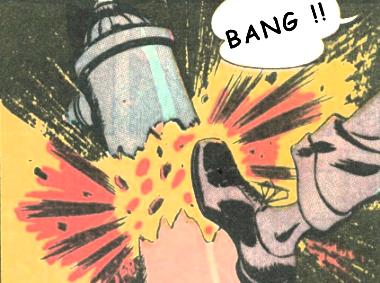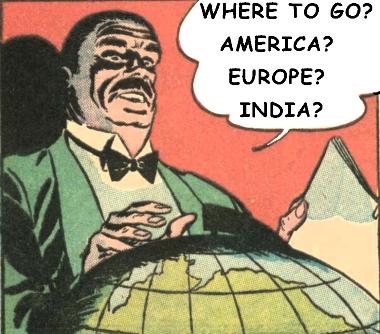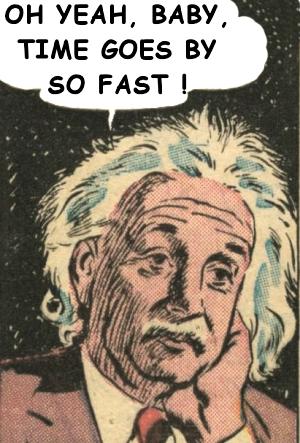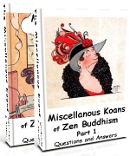History of Ancient India - the Beginning
Zen Riddle #25-snow :
Why are the thousand mountains covered with snow?
Here's the answer....(Show/Hide)
Want more riddles? Choose one!
#27-hand #28-leg #18-lotus mumonkan
The history of ancient India started about 74,000 years ago with a tremendous bang. Mount Toba on today's Sumatra literally exploded and blasted some million tons of dust and stones into the Stratosphere.
It was the biggest volcanic eruption on earth in the last two million years. For some years it was dark and continuously winter, followed by about 1000 years of ice age.
All forms of life on the Indian subcontinent were suffocated and buried under three to six meters of volcanic stones and dust.
The volcano killed about 70% of the world's human population.

Mt.Toba -- How it happened
Modern humans, homo sapiens, survived outside Africa, only in Asia.
Some crossed the Himalayas others wandered along the coasts to India when sea levels were low.
Until today the genome of people in the the western and the eastern part of India differ and an ancient human population still lives on the Andaman Islands in the east of India.
Asian survivors migrated not only to India but also to Australia. Their common origin makes east coast Indians the genome-cousins of aboriginal Australians.
The newcomer to India developed and became its indigenous population, the Dravidians. During their long migration human groups developed "under way" not only language but also a protective behavior against carnivores. After their meals the whole group stayed together in some kind of "meditation". These newcomer to India were mostly homo sapiens with larger brains then other types of hominids and could remember the protection through "meditation" .
After again 10.000 years the human population re-occupied India until about 42.000 years ago. But suddenly the protective magnetic cover of the planet was reduced to ca. 5% of it's normal strength. Deadly cosmic beams killed much life on earth. During these years many homo sapiens only survived in caves. Other types of hominids and many living beings dyed or even dyed out, like the homo neanderthalensis.
The Owner of the Land
The dramatic events in the history of ancient India from 70,000 to 40,000 years ago, are today scientifically proven through geological, archaeological and, especially, genetical methods.

Travelling Overseas
A genetic survey in South India discovered Dravidian people genetically close indigenous Australians!
While East Asia and Europe became populated by humans who fled the droughts in central Asia, migration from today`s Tibet added to the ancient Indian population.
Some Dravidian groups may have migrated into the Indus civilization to learn about agriculture techniques.
Like their cousins in Australia, the indigenous populations of India were displaced and marginalized by human groups of Aryan origin.
In Australia the takeover happened in the 18th century and the intruders came from northern Europe. In India it happened about 7 thousand years earlier and the intruders came from the Indus Valley.
The Indus Valley Civilization
The first agricultural settlements in India emerged about 10.000 years ago along the Indus river system.
It's an area between today's Iran, Pakistan and India where indigenous villagers came in contact with other civilizations

History of India Timeline
People of the Indus valley slowly developed systems for writing and counting and a technically advanced urban civilization.
At the beginning of the second millennium BC the Indus city of Harrapan had hydraulic systems for water supply and sewage removal.
But it didn't last.
During centuries of economic decline in the Indus Valley Indo-Asian tribes from the Caspian Sea area arrived.
These newcomers later dominated India but changed Indian history in their favor.
That's the second part of ancient Indian history, which also includes the beginning of Buddhism history.
Please Notice: Names and Labels
Only in the 19th century, when the British ruled India, the tribes of ancient India were given names by European scientists.
The indigenous people of India, the Dravidian were labelled untouchables, dalits or tribals. The Indo-Europeans called themselves named "Aryans" or Hindus, members of the "Brahmanic culture". Brahmanism later became honored as cradle of European Civilization.
In early 20th century prehistoric sites of a Dravidian Civilization in the Indus Valley were discovered and turned the history of ancient India upside down.
Traditional India hasn't acknowledged these changes yet.
Got to: second part of ancient Indian history
Got to: Buddhism History
Return to: Zen Buddhism Home from History of ancient India



